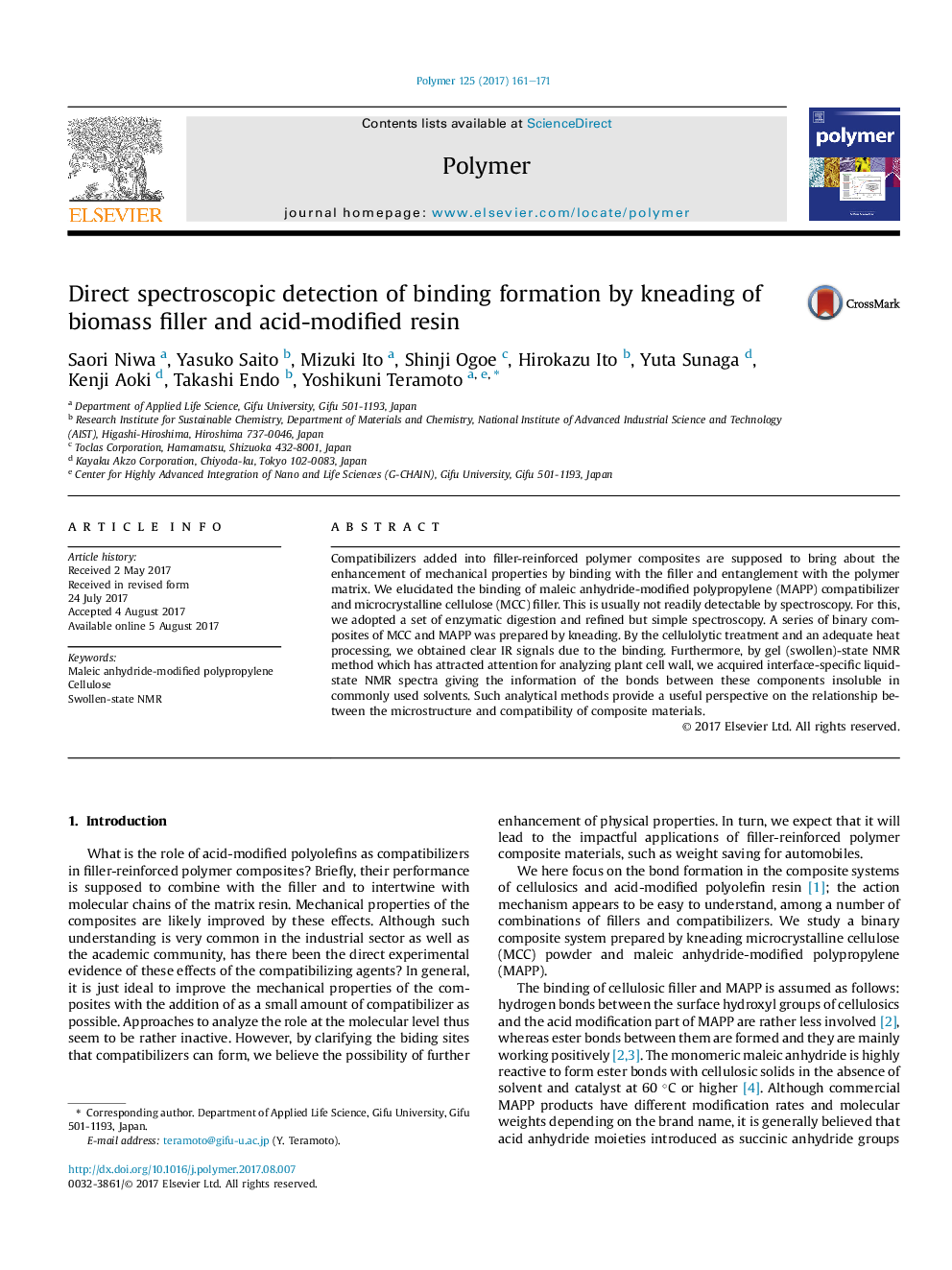| کد مقاله | کد نشریه | سال انتشار | مقاله انگلیسی | نسخه تمام متن |
|---|---|---|---|---|
| 5177855 | 1502481 | 2017 | 11 صفحه PDF | دانلود رایگان |
- We tried to clarify the binding of cellulosic filler and compatibilizer.
- It is generally difficult to detect the binding sites due to the low concentration.
- We prepared binary composites of them by kneading.
- The composites were enzymatically digested to condense the binding sites.
- FT-IR and solid- and swollen-state NMR allowed us to detect the ester bonding.
Compatibilizers added into filler-reinforced polymer composites are supposed to bring about the enhancement of mechanical properties by binding with the filler and entanglement with the polymer matrix. We elucidated the binding of maleic anhydride-modified polypropylene (MAPP) compatibilizer and microcrystalline cellulose (MCC) filler. This is usually not readily detectable by spectroscopy. For this, we adopted a set of enzymatic digestion and refined but simple spectroscopy. A series of binary composites of MCC and MAPP was prepared by kneading. By the cellulolytic treatment and an adequate heat processing, we obtained clear IR signals due to the binding. Furthermore, by gel (swollen)-state NMR method which has attracted attention for analyzing plant cell wall, we acquired interface-specific liquid-state NMR spectra giving the information of the bonds between these components insoluble in commonly used solvents. Such analytical methods provide a useful perspective on the relationship between the microstructure and compatibility of composite materials.
210
Journal: Polymer - Volume 125, 8 September 2017, Pages 161-171
